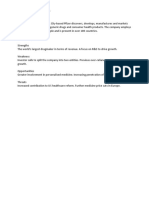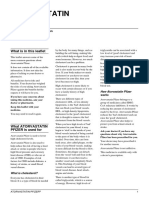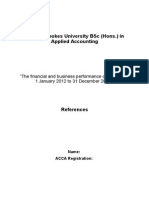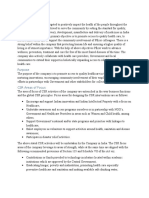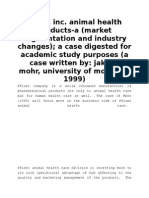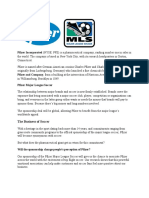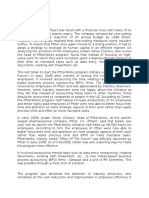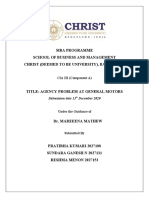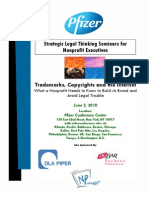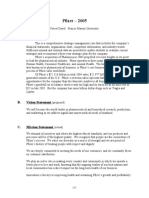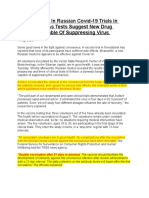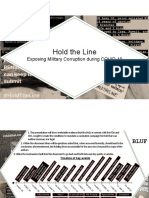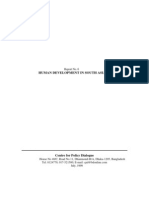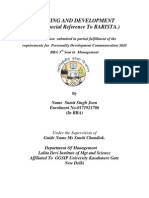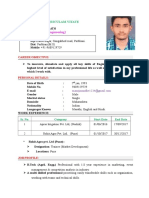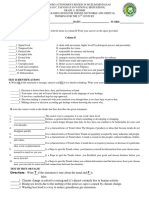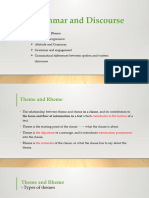Raaid Ahmad Professor Reiter
Case #3 IT Management
Pfizer
I. Executive Overview:
Pfizer, the world’s fourth largest company has a multitude of Information
Technology needs. Pfizer is different from most other large organizations in that the
company does not have a CIO (Chief Information Officer). Instead, Pfizer has an
Information Technology Leadership Team (ITLT) that serves as the virtual CIO of the
organization (Exhibit 1). This report analyzes the decision to maintain an ITLT in the face
of Pfizer’s changing business environment.
II. Critical Issue:
The critical issue for Pfizer is to first determine whether a Virtual CIO structure is
sustainable and then to determine how to maximize the efficiency and utility of ITLT.
Factors that need to be considered are changes in the business climate due to the merger
with Pharmacia, effectiveness of the ITLT and extensibility of the ITLT as Pfizer evolves.
III. Analysis:
a. Problem of Sustainability
Many analysts equate a large company to one that reacts slowly to change and
one that generally changes procedures and strategies quite rarely. For the most part,
Pfizer does not fit into this stereotype of varying levels of outsourcing within the
company and because individual divisions of Pfizer are very, very responsive to
change. As such, a major concern for Pfizer is whether or not the structure of a
Virtual CIO is sustainable in the changing business environment that Pfizer is a part
of.
After the merger with another industry giant, Pharmacia, Pfizer’s size grew
considerably. In addition to this, IT processes, systems, and applications change
immensely. It is difficult to gauge whether such a huge change would render the
Virtual CIO template obsolete. With the addition of new departments and new
technologies, the current Virtual CIO would be insufficient to handle all company
IT needs because there would be a lack of knowledge about the systems of
Pharmacia. Additionally, this lack of knowledge would necessitate adding more
officers to the ITLT, in order to sufficiently cover the IT needs of all parts of the
company. With more people, the bureaucracy in the ITLT would necessarily grow
and the responsiveness of the Virtual CIO would undoubtedly diminish, even if in a
slight manner.
� b. Effectiveness of the Virtual CIO
Despite the potential downfalls of this Virtual CIO system, there are significant
advantages to the system, which ultimately prove that the template is sustainable.
As Pfizer grows, officers would be added to the ITLT, but the ITLT would not be
required to make decisions as a whole as often as it would be required to make
decisions based on specific departments. As such, bureaucracy would be
minimized because only a small subset of the ITLT would have the expertise and
knowledge to make a decision on the subset of the organization that they are in
charge of. Additionally, a larger ITLT means that the Virtual CIO as a whole
would have more control over the information policies of the entire company
because each member would be more versed in the specifics of their information
responsibilities, as opposed to being forced to control the information flow for
multiple parts of the organization. As such, this report makes the claim that a
Virtual CIO is not only sustainable for large companies, but also more efficient and
effective than a traditional CIO.
c. Extensibility of the Virtual CIO
A problem with an extended Virtual CIO is that with time, the ITLT would
become extremely large and the communication at the top level would no longer be
nearly immediate and a bureaucratic slowdown would take place. In a company
that relies on IT as much as Pfizer does, this would be disastrous. It is important to
keep the Virtual CIO as responsive as possible but the breadth and depth of
knowledge of the ITLT must also be taken into account. Balancing responsiveness
and knowledge breadth is a common problem when creating teams to carry out
specified tasks. As such, the extensibility of the Virtual CIO poses a problem in
terms of responsiveness and this must be addressed when analyzing the utility of
the Virtual CIO.
IV. Recommendation:
a. Virtual or Traditional CIO
It is the recommendation of this report that the ITLT be kept intact as the
Virtual CIO of Pfizer. The Virtual CIO template allows individuals to control the
flow of information to their respective departments and allows them to make
specific, informed decisions about how information is used within their departments
as well. This provides an advantage over one CIO that dictates the information
policy for individuals at a lower level to execute.
�b. Extensibility Problem
The problem of extensibility can be addressed by streamlining the ITLT every
few months or after every new acquisition. The streamlining process would entail
moving officers in and out of the ITLT as mergers, acquisitions or changes in the
company structure take place. For example, after the Pharmacia merger, officers at
the head of Pharmacia departments would be added to the ITLT. In order to
compensate, the spaces for multiple officers in smaller departments would be
condensed into one space on the ITLT. The most senior officer (of the streamlined
spaces) would remain on the ITLT and be responsible for each department that was
being streamlined on the ITLT. The officer(s) that are moved from the ITLT act as
liaisons to keep the flow of information between the ITLT and individual
departments at an optimal level.
